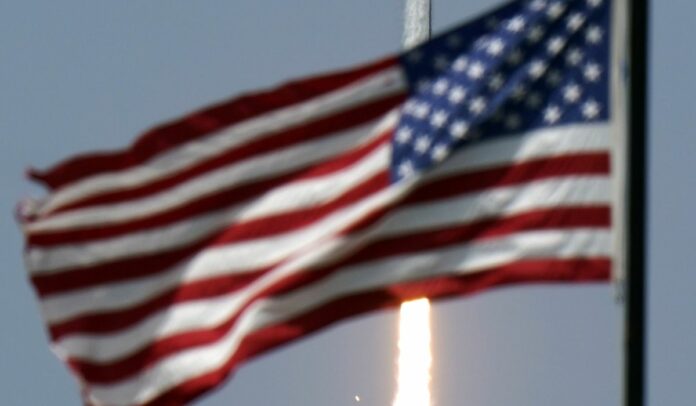A SpaceX mission roared into the heavens as President Trump looked on Saturday, marking the first time a commercial space company has sent American astronauts into orbit.
Mr. Trump and Vice President Mike Pence watched from a rooftop two miles away as the Falcon 9 rocket launched the Crew Dragon capsule from the Kennedy Space Center in Florida to ferry astronauts Bob Behnken and Doug Hurley to the International Space Station. The trip should take about 19 hours.
The first manned mission from U.S. soil in nine years offered a dazzling, the-future-is-here moment amid a deadly coronavirus pandemic that’s upended normal life.
It also represented a new era of space travel, as NASA partners with commercial space explorers and Mr. Trump eyes ambitious plans to send humans back to Moon and then Mars. The launch may also set the table for private space tourism for people with the means.
The astronauts gave a thumbs up before the successful liftoff and Mr. Trump applauded from his viewing position.
“I’m so proud of the people, of NASA, public and private. When you see a sight like that, it’s incredible. When you hear that sound — the roar — you can imagine how dangerous it is,” Mr. Trump said. “I said, ‘Would you hear anything?’ because we’re a good distance away and then all of a sudden you hear that roar.”
Elon Musk, the founder of SpaceX, monitored the mission from the company’s launch control center.
Saturday’s launch was the second try, after poor weather scrubbed Wednesday’s attempt. Mr. Trump traveled to Florida for both.
Mr. Trump cited the pandemic as a reason he wanted to take in the amazing launch.
“We suffered something that was terrible. It should have never happened — it should have never come out of China,” Mr. Trump said. “That’s one of the reasons why I wanted to be here today and I think anyone of you would say that was an inspiration to see what we just saw.”
NASA hasn’t sent astronauts into space from U.S. territory since the Space Shuttle program ended in 2011. It’s been forced to rely on Russian launches to get to the space station since then, but the use of Mr. Musk’s venture marked a pivot to the U.S. private sector.
“I would say [Wednesday’s event] is extremely important for the United States because it marks the first time that we’re going to have commercial launch systems and we’re also going to have a diversity of launch systems,” said Phil Metzger, a planetary scientist at the University of Central Florida who worked at NASA for three decades.
Relying on a single, government-run system has its pitfalls. For instance, the shuttle program was grounded at the start of the 1990s due to hydrogen leaks.
Wednesday’s launch ends another frustrating gap in U.S. space exploration, due in part to lackluster funding from Congress, according to Mr. Metzger.
“I was not supposed to be a nine-year gap. Now we are finally ending the gap,” he said.
Having a diversity of programs will be critical to meeting America’s ambitions in space, from lunar mining to space tourism, he added, foreseeing a scenario in which people are able to buy tickets to the moon within two decades.
Earlier this week, NASA Administrator Jim Bridenstine said Mr. Musk’s company showed the ability to adapt quickly after test accidents on the ground.
“SpaceX can do things that NASA historically has not done,” he said. “They test, they fail, they fix, they fly, until the point where we are today, where not only is SpaceX comfortable, but NASA is comfortable.”






